 1996 Opel Vectra B CC Dimensions, Size & Specs
1996 Opel Vectra B CC Dimensions, Size & SpecsMeasurements of the 1996 Opel Vectra B CC, engineered for optimal performance and comfort
| Dimensions | |
|---|---|
| Length: | 4495 mm177.0 in14.7 ft |
| Width: | 1707 mm67.2 in5.6 ft |
| Width (Opened Mirrors): | 1841 mm72.5 in6.0 ft |
| Height: | 1425 mm56.1 in4.7 ft |
| Trunk Capacity: | 480 liter17.0 cu ft |
| Trunk Capacity (Max): | 790 liter27.9 cu ft |
| Weight Specifications | |
| Curb Weight: | 1185-1370 kg2612-3020 lbs |
| Maximal permitted Weight: | 1715-1950 kg3781-4299 lbs |
| Tire Specifications | |
| Rims Sizes: |
|
| Tire Sizes: |
|
The Opel Vectra B CC, produced between 1995 and 1998, represents the hatchback variant of the second generation Opel Vectra lineup. Launched as a mid-size family car, the 1996 model year Vectra B CC combines practical hatchback versatility with sleek European styling, designed to meet everyday driving and commuting needs.
This generation measures 4495 mm (176.8 inches) in length, providing ample cabin space without sacrificing urban maneuverability. With a width of 1707 mm (67.2 inches) and extended width of 1841 mm (72.5 inches) including opened side mirrors, it strikes a balance between ease of parking and road presence. The overall height stands at 1425 mm (56.1 inches), delivering a low and aerodynamic profile that complements its hatchback form.
Weighing between 1185 and 1370 kilograms (2612 to 3020 pounds) in curb weight, the Vectra B CC offers a solid yet nimble driving experience. Its maximum loaded weight ranges from 1715 to 1950 kilograms (3780 to 4299 pounds), supporting a comfortable payload capacity for passengers and cargo alike.
The hatchback design contributes to practical cargo versatility, featuring a luggage capacity of 480 liters (16.9 cubic feet) with rear seats in place and expanding to 790 liters (27.9 cubic feet) when the rear seats are folded down. This flexibility enhances its suitability for family use or leisure trips requiring additional storage space.
The Vectra B CC rides on rim sizes varying from 14 to 16 inches with tire options including 175/70 R14, 195/65 R15, and 205/55 R16, providing drivers the choice to balance comfort and handling. Overall, the Opel Vectra B CC epitomizes a mid-1990s European hatchback that caters to those needing a practical yet stylish vehicle with commendable size and load capacity.
Discover the standout features that make the 1996 Opel Vectra B CC a leader in its class
Have a question? Please check our knowledgebase first.
The Opel Vectra B CC from 1995 to 1998 measures 4495 mm (176.8 inches) in length, 1707 mm (67.2 inches) in width, and stands 1425 mm (56.1 inches) high. With mirrors opened, the width extends to 1841 mm (72.5 inches). These dimensions place the Vectra B CC solidly in the mid-size hatchback category, providing a balanced size that supports both interior space and maneuverability.
The Opel Vectra B CC's curb weight ranges from 1185 kg to 1370 kg (approximately 2,612 lbs to 3,020 lbs), depending on the trim and equipment. Its maximum authorized weight, which includes passengers and cargo, lies between 1715 kg and 1950 kg (3,781 lbs to 4,299 lbs). These weight figures contribute to its handling characteristics and fuel efficiency, striking a balance between sturdiness and economy.
The Opel Vectra B CC offers a practical luggage capacity of 480 liters (approximately 16.9 cubic feet) with all seats in place. When the rear seats are folded down, this volume increases markedly to 790 liters (about 27.9 cubic feet). This flexibility makes the Vectra B CC an excellent choice for drivers needing both passenger space and significant cargo room for trips or daily activities.
With a length of 4495 mm (176.8 inches) and a width of 1707 mm (67.2 inches) without mirrors, the Opel Vectra B CC comfortably fits into most standard garages in many regions. Standard residential garages typically measure around 5400 mm (213 inches) in depth and 2700 mm (106 inches) in width, providing sufficient space to park the car and open doors for entry and exit. However, consider the mirror width of 1841 mm (72.5 inches) when parking in tight spaces, as this impacts the total width clearance needed.
Compared to its predecessor, the Opel Vectra A, the Vectra B CC is notably larger in all dimensions. The Vectra B CC's length of 4495 mm (176.8 inches) surpasses the Vectra A, which typically measured around 4425 mm (174.2 inches) in length. The width and height also increased slightly, offering more interior space and improved road presence. This growth in size reflects Opel's effort to enhance comfort, safety, and versatility in the newer generation, addressing the evolving demands of mid-size car buyers during the mid-1990s.
The Opel Vectra B CC was equipped with several tire and rim options, providing flexibility for performance and comfort. Rims were available in sizes 14, 15, and 16 inches, corresponding to tire sizes of 175/70 R14, 195/65 R15, and 205/55 R16. These varied configurations allowed owners to select setups prioritizing ride quality or sporty handling, with larger rims generally offering improved road grip and aesthetics.
With side mirrors opened, the Opel Vectra B CC's width expands to 1841 mm (72.5 inches), approximately 134 mm (5.3 inches) wider than the body alone. This increased width means drivers need extra clearance when parking in narrow spots or maneuvering through tight spaces. While this may limit some garage or parking lot fit situations, the mirrors' width is standard for vehicles of this class and necessary for adequate visibility and safety.
The Opel Vectra B CC has an overall height of 1425 mm (56.1 inches), offering sufficient headroom for average-height drivers and passengers. This height contributes to a low aerodynamic profile typical of hatchbacks, enhancing stability and fuel economy while maintaining comfort. Ground clearance details vary with suspension setups but generally provide a balance between handling dynamics and obstacle clearance, suitable for urban and highway driving conditions.
In the competitive mid-size hatchback segment of the mid-1990s, the Opel Vectra B CC stood out for its balanced dimensions and practical interior space. Its 4495 mm (176.8 inches) length and 480-liter (16.9 cubic feet) luggage capacity were competitive with contemporaries like the Ford Mondeo and Volkswagen Passat hatchbacks. The Vectra’s flexible rear seats expanding cargo space to 790 liters (27.9 cubic feet) also gave it an edge in versatility. Overall, it combined a manageable footprint with comfortable passenger accommodation, making it a practical and appealing choice in its class.
The hatchback design of the Opel Vectra B CC offers enhanced versatility compared to sedans from the same era by providing easier access to the cargo area and more adaptable luggage capacity. The ability to fold the rear seats significantly increases available cargo space from 480 liters (16.9 cubic feet) to 790 liters (27.9 cubic feet), enabling transport of larger or bulkier items. This flexibility makes the Vectra B CC particularly suitable for families, outdoor enthusiasts, or anyone needing a practical daily driver with ample cargo-carrying options.
Discover similar sized cars.
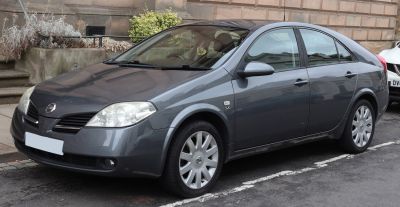
| Production: | 2002-2007 |
|---|---|
| Model Year: | 2002 |
| Length: | 4565 mm179.7 in |
| Width: | 1760 mm69.3 in |
| Height: | 1480 mm58.3 in |
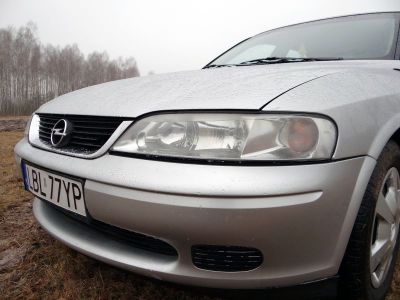
| Production: | 1999-2002 |
|---|---|
| Model Year: | 1999 |
| Length: | 4495 mm177.0 in |
| Width: | 1841 mm72.5 in |
| Height: | 1425 mm56.1 in |
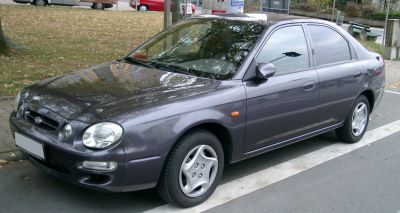
| Production: | 1997-2001 |
|---|---|
| Model Year: | 1998 |
| Length: | 4475 mm176.2 in |
| Width: | 1711 mm67.4 in |
| Height: | 1427 mm56.2 in |
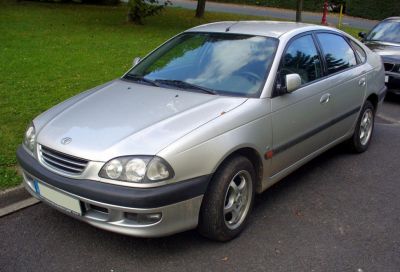
| Production: | 1997-2003 |
|---|---|
| Model Year: | 1997 |
| Length: | 4490 mm176.8 in |
| Width: | 1710 mm67.3 in |
| Height: | 1425 mm56.1 in |
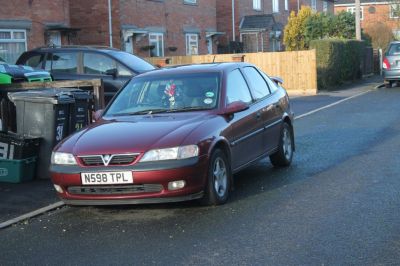
| Production: | 1995-1999 |
|---|---|
| Model Year: | 1995 |
| Length: | 4495 mm177.0 in |
| Width: | 1841 mm72.5 in |
| Height: | 1425 mm56.1 in |
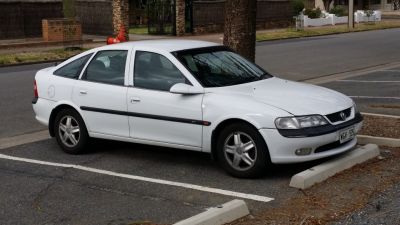
| Production: | 1998-2000 |
|---|---|
| Model Year: | 1998 |
| Length: | 4477 mm176.3 in |
| Width: | 1707 mm67.2 in |
| Height: | 1428 mm56.2 in |
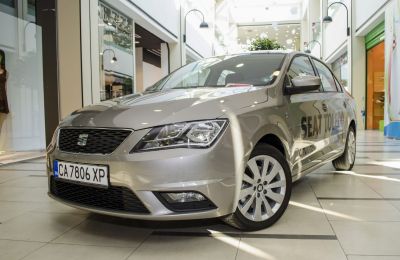
| Production: | 2012-2018 |
|---|---|
| Model Year: | 2012 |
| Length: | 4482 mm176.5 in |
| Width: | 1706 mm67.2 in |
| Height: | 1461 mm57.5 in |
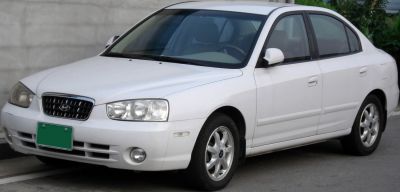
| Production: | 1999-2006 |
|---|---|
| Model Year: | 2001 |
| Length: | 4460-4520 mm175.6-178.0 in |
| Width: | 1700-1720 mm66.9-67.7 in |
| Height: | 1425-1460 mm56.1-57.5 in |
